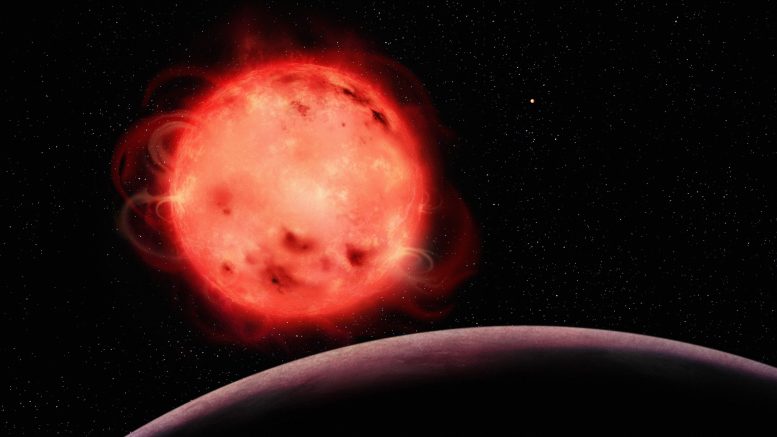
This artistic representation of the TRAPPIST-1 red dwarf star showcases its very active nature. The star appears to have many stellar spots (colder regions of its surface, similar to sunspots) and flares. The exoplanet TRAPPIST-1 b, the closest planet to the system’s central star, can be seen in the foreground with no apparent atmosphere. The exoplanet TRAPPIST-1 g, one of the planets in the system’s habitable zone, can be seen in the background to the right of the star. The TRAPPIST-1 system contains seven Earth-sized exoplanets. Credit: Benoît Gougeon, Université de Montréal
Astronomers have made breakthroughs in studying the TRAPPIST-1 exoplanetary system, emphasizing the role of stellar contamination and exploring the potential atmospheres of TRAPPIST-1 b.
Astronomers led by a team at Université de Montréal have made important progress in understanding the intriguing TRAPPIST-1 exoplanetary system, which was first discovered in 2016 amid speculation it could someday provide a place for humans to live.
Not only does the new research shed light on the nature of TRAPPIST-1 b, the exoplanet orbiting closest to the system’s star, it has also shown the importance of parent stars when studying exoplanets.
Published in Astrophysical Journal Letters, the findings by astronomers at UdeM’s Trottier Institute for Research on Exoplanets (iREx) and colleagues in Canada, the U.K., and the U.S. shed light on the complex interplay between stellar activity and exoplanet characteristics.
The TRAPPIST-1 System
TRAPPIST-1 is a star much smaller and cooler than our sun located approximately 40 light-years away from Earth. Since the discovery of its seven Earth-sized exoplanets seven years ago, it has captured the attention of scientists and space enthusiasts alike. These worlds, tightly packed around their star with three of them within its habitable zone, have fueled hopes of finding potentially habitable environments beyond our solar system.
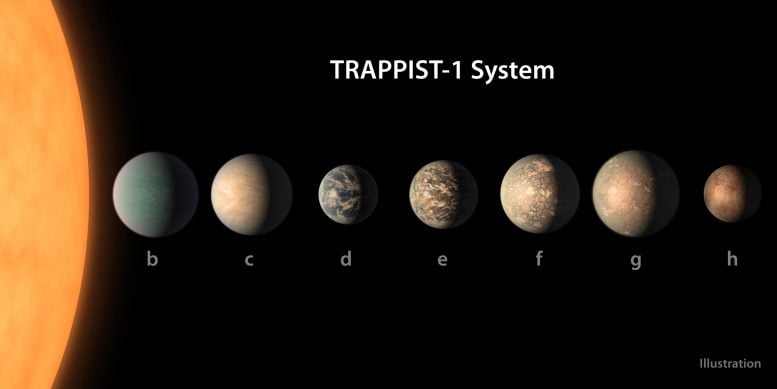
This illustration shows what the TRAPPIST-1 planetary system may look like, based on available data about the planets’ diameters, masses, and distances from the host star. Astronomers have named them the planets TRAPPIST-1a, TRAPPIST-1b, and so forth. Credit: NASA/JPL-Caltech
Led by iREx doctoral student Olivia Lim, the researchers employed the powerful James Webb Space Telescope (JWST) to observe TRAPPIST-1 b. Their observations were collected as part of the largest Canadian-led General Observers (GO) program during the JWST’s first year of operations. (This program also included observations of three other planets in the system, TRAPPIST-1 c, g, and h.) TRAPPIST-1 b was observed during two transits — the moment when the planet passes in front of its star — using the Canadian-made NIRISS instrument aboard the JWST.
Observational Techniques and Preliminary Findings
“These are the very first spectroscopic observations of any TRAPPIST-1 planet obtained by the JWST, and we’ve been waiting for them for years,” said Lim, the GO program’s principal Investigator.
She and her colleagues used the technique of transmission spectroscopy to peer deeper into the distant world. By analyzing the central star’s light after it has passed through the exoplanet’s atmosphere during a transit, astronomers can see the unique fingerprint left behind by the molecules and atoms found within that atmosphere.

Olivia Lim, Ph.D. student at the Trottier Institute for Research on Exoplanets at the Université de Montréal, led the team that studied the exoplanet TRAPPIST-1 b and its star using the first-ever spectroscopic data of the TRAPPIST-1 system from the James Webb Space Telescope. Credit: Amélie Philibert, Université de Montréal
‘Just a Small Subset’
“This is just a small subset of many more observations of this unique planetary system yet to come and to be analyzed,” adds René Doyon, Principal Investigator of the NIRISS instrument and co-author on the study. “These first observations highlight the power of NIRISS and the JWST in general to probe the thin atmospheres around rocky planets.”
The astronomers’ key finding was just how significant stellar activity and contamination are when trying to determine the nature of an exoplanet. Stellar contamination refers to the influence of the star’s own features, such as dark spots and bright faculae, on the measurements of the exoplanet’s atmosphere.
The team found compelling evidence that stellar contamination plays a crucial role in shaping the transmission spectra of TRAPPIST-1 b and, likely, the other planets in the system. The central star’s activity can create “ghost signals” that may fool the observer into thinking they have detected a particular molecule in the exoplanet’s atmosphere.
This result underscores the importance of considering stellar contamination when planning future observations of all exoplanetary systems, the sceintists say. This is especially true for systems like TRAPPIST-1, since the system is centered around a red dwarf star which can be particularly active with starspots and frequent flare events.
“In addition to the contamination from stellar spots and faculae, we saw a stellar flare, an unpredictable event during which the star looks brighter for several minutes or hours,” said Lim. “This flare affected our measurement of the amount of light blocked by the planet. Such signatures of stellar activity are difficult to model but we need to account for them to ensure that we interpret the data correctly.”
Modeling and Analysis
Based on their collected JWST observations, Lim and her team explored a range of atmospheric models for TRAPPIST-1 b, examining various possible compositions and scenarios.
They found they could confidently rule out the existence of cloud-free, hydrogen-rich atmospheres – in other words, there appears to be no clear, extended atmosphere around TRAPPIST-1 b. However, the data could not confidently exclude thinner atmospheres, such as those composed of pure water, carbon dioxide, or methane, nor an atmosphere similar to that of Titan, a moon of Saturn and the only moon in the Solar System with its own atmosphere.
These results are generally consistent with previous (photometric, and not spectroscopic) JWST observations of TRAPPIST-1 b with the MIRI instrument. The new study also proves that Canada’s NIRISS instrument is a highly performing, sensitive tool able to probe for atmospheres on Earth-sized exoplanets at impressive levels.
Reference: “Atmospheric Reconnaissance of TRAPPIST-1 b with JWST/NIRISS: Evidence for Strong Stellar Contamination in the Transmission Spectra” by Olivia Lim, Björn Benneke, René Doyon, Ryan J. MacDonald, Caroline Piaulet, Étienne Artigau, Louis-Philippe Coulombe, Michael Radica, Alexandrine L’Heureux, Loïc Albert, Benjamin V. Rackham, Julien de Wit, Salma Salhi, Pierre-Alexis Roy, Laura Flagg, Marylou Fournier-Tondreau, Jake Taylor, Neil J. Cook, David Lafrenière, Nicolas B. Cowan, Lisa Kaltenegger, Jason F. Rowe, Néstor Espinoza, Lisa Dang and Antoine Darveau-Bernier, 22 September 2023, The Astrophysical Journal Letters.
DOI: 10.3847/2041-8213/acf7c4

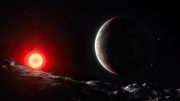
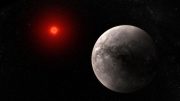
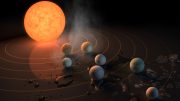
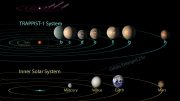
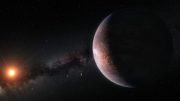
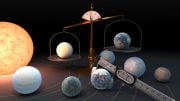
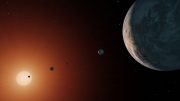
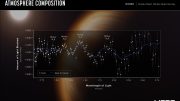
Be the first to comment on "Stellar Contamination and Ghostly Atmospheres: Webb Reveals New Insights Into TRAPPIST-1 Exoplanet"